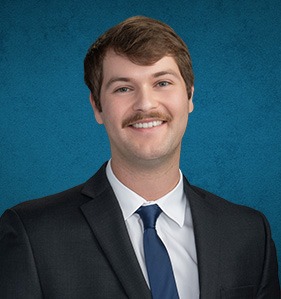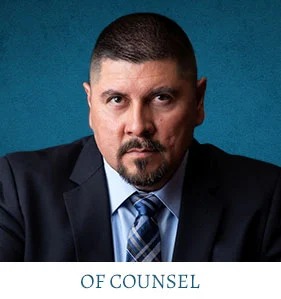CALL (512) 246-2224 TO SPEAK WITH PERSONAL INJURY ATTORNEYS FOR FREE
Parents who enroll their child or children in a daycare trust that their kids will be properly supervised and cared for. However, accidents and mishaps do frequently occur. When a child is hurt or injured while at daycare, the parents may be left figuring out how to pay for the child’s medical services. Similarly, the parents may be wondering whether any legal action against the daycare can be pursued. Read on for helpful advice regarding daycare injuries, including what should be done following an accident, how waivers can affect claims, and what forms of compensation may be available.
If your child was injured in daycare, call Zinda Law Group at (800) 863-5312 for a 100% free case evaluation with one of our personal injury lawyers.
What To Do After a Daycare Injury
The most important thing to do after a child has been hurt at a daycare is to promptly treat the child’s injuries at the scene of the accident. Once the child has been treated, the following steps should be taken:
1. Visit a Hospital
In cases where the child suffered a major injury, it is critical that the child is transported to a nearby hospital as quickly as possible. Because these types of injuries can put a child’s health and well-being at serious risk, it is important that professional medical attention is sought without any wasted time. Examples of major injuries may include:
- Broken bones
- Severe cuts or lacerations
- Bleeding
- Stomach illness or vomiting
- Concussions
- Loss of consciousness or confusion
- Head and neck injuries
- Animal or insect bites
Even in cases where the injury seems minor, it may nevertheless be a good decision to take the child to a hospital. Many times, an injury may appear as a minor injury. However, if the injury is not properly treated by a medical professional within a reasonable time, the injury can worsen.
2. File an Accident Report
Another important step that should be taken following a daycare injury is to file a formal accident report with the supervisor or manager of the daycare center. If possible, you should contact the daycare supervisor over the phone, or meet with the supervisor in person, and request that an accident report or complaint be filed against the daycare.
The accident report can be helpful for at least two reasons. First, the report can serve as official evidence of the accident, as it contains many important details such as when, where, and how the accident occurred. Second, the report will hopefully put the daycare on high alert when it comes to child safety moving forward.
3. Document the Accident
A crucial step in the post-daycare injury process is to document the accident. This means keeping and maintaining an organized file or folder which contains every important piece of information relating to the accident. Examples of documents that should be kept in the file include:
- Photographs of the child’s injuries
- Copies of the accident report or formal complaint
- Copies of witness statements,
- Copies of surveillance footage from the daycare
- Medical bills
- Prescription receipts
Although keeping track of this information may seem like a lot of work, it may be helpful later when it comes time to prove the extent of the child’s injuries. Documenting the accident may also make it easier to remember important dates, such as when the accident occurred or when the child visited the hospital. Thus, it is crucial to be diligent and keep a running log of every important document relating to the accident.
4. Contact an Attorney
Finally, you should contact a personal injury attorney. An attorney may want to meet with you to discuss the details of the accident. After learning about the accident and resulting injuries, the attorney may provide valuable legal advice such as what options you have moving forward. If necessary, an attorney may begin the process of filing a formal lawsuit against the daycare.
What if I Signed a Liability Waiver?
Many daycares include a “liability waiver” or “liability clause” in their paperwork which the daycare requires the parents to fill out before enrolling the child in the daycare. The precise language of the liability clause may differ from place to place, but the overall message is the same.
Essentially, the daycare is claiming that it will not be held responsible for any injuries that the child may sustain while under the supervision of the daycare. In other words, the daycare is saying that you have given up the right to sue them if anything bad happens to your child.
Often, parents will sign these forms without looking over the terms of the liability waiver. When an injury to the child does occur, the daycare will argue that you cannot do anything because you signed the waiver.
However, it is important to keep in mind that these waivers are looked upon unfavorably by courts. In the eyes of the courts, liability waivers are against public policy because it is unfair for a daycare to make money for watching your children while not having to be responsible for ensuring their safety. Overall, this means that legal action may still be possible even if a liability waiver has been signed.
Proving Fault
If you decide to pursue legal action against the daycare, it is important to understand the concept of fault, as well as what must be done to show that the daycare was at-fault for the injuries sustained by your child.
In order to succeed on a personal injury claim initiated on behalf of your child against a daycare, you need to establish that the daycare was negligent in some form or fashion. Establishing negligence requires establishing the following factors:
1. The daycare had a duty or obligation to care for and protect your child
The first part of proving a negligence suit is establishing that the defendant (i.e., the daycare) owed a duty of care to the victim (i.e., the injured child). Although the exact definition of “duty of care” depends on the circumstances and relationship between the two parties, a duty of care typically refers to a duty to keep someone safe or to refrain from engaging in an activity that could potentially cause someone harm. In daycare injuries cases, the victim must show that the defendant had a duty to act as a “reasonably prudent person” would by taking the necessary precautions to ensure that the child did not suffer and injury or harm.
2. The daycare breached or violated the duty to care for and protect your child
In many cases, the main arguments focus on whether the daycare breached or violated its duty to care for and protect your child. Proving this element may require evidence such as accident report forms, witness statements, expert testimony, surveillance footage, and medical records. Such evidence can be collected by an attorney throughout the process of litigation and may serve as a crucial component of your claim.
3. The daycare’s breach of its duty caused the injuries sustained by your child
The third part of proving a negligence claim is establishing a link between the defendant’s breach of duty and the harm sustained by the injured person. In other words, the victim must prove that the defendant’s actions or inactions directly caused the injuries of the individual.
4. Your child sustained injuries whose nature and value can be supported by proof
The fourth part of proving negligence is also known as proving “damages.” In general, proving damages means proving that the injured party suffered some type of harm. In daycare injury cases, this means establishing that your child suffered some sort of injury. Part of this analysis also involves showing financial loss that has been incurred as a result of the injuries.
Common Daycare Accidents
Like children, daycare accidents come in all shapes and sizes. However, there are some accidents that are more common than others. Listed below are examples of some of the most common daycare accidents.
Cuts, Scrapes, and Bruises
One of the most common daycare injuries is the common cut or scrape. This type of skin injury can occur for several reasons. For instance, a child may fall and scrape his or her skin while playing outside at the jungle gym. Alternatively, a child may cut himself or herself with a pair of scissors or other tools during arts-and-crafts.
In many cases, the injury can be treated on-site with the materials of a first-aid kit. However, if the injury is severe, such as when there is excessive bleeding, a trip to the hospital may be necessary.
Choking or Suffocation
Another type of injury that is common throughout daycares is choking or suffocation. In most cases, this injury is caused by the child accidentally swallowing or ingesting a small article such as a toy. In other cases, the child may choke on a piece of food.
Recognizing a child who is choking or suffocating immediately is critical for the child’s recovery. Many daycare staff members are trained to recognize such instances. It is also important to keep in mind that a trip to a doctor or hospital may be necessary even where the choking was taken care of at the scene of the accident.
Unintentional Poisoning
Although a child’s curiosity is often a valuable trait, it can sometimes get a child into dangerous situations. Many daycare accidents involve some form of unintentional poisoning due to a child eating or ingesting a substance that should not have been eaten.
For instance, an unattended bottle of blue dish soap may be left on a table. Because the substance may look appealing to the child, the child may believe it to be a good idea to eat the soap. The same goes for other substances such as glue, paint, or other cleaning supplies.
In many cases, such accidents require an immediate trip to the hospital. This is especially the case if the child ingested a significant amount of the substance.
Drowning or Near Drowning
Unfortunately, there is a risk of drowning at many daycare centers. Some daycares have kiddie pools or small tubs that can conceivably serve as the site of an accident. Alternatively, some daycares take their children on field trips to nearby pools.
At any rate, it is important to realize that these types of injuries may be possible. In cases where a child has suffered a near-drowning injury, it is critical that the child is taken to a medical professional as soon as possible.
Making a Claim on Behalf of Your Child
Because a minor does not have the legal capacity to sue, personal injury litigation in child injury cases involves an adult standing-in for the injured child as “next friend.” Typically, this is one or more of the parents of the injured child. Thus, a parent of an injured child may have the option to sue the daycare on behalf of the child following the injury. Listed below are the key steps that comprise the claim filing process in these situations.
1. Determine Whether a Claim Should be Filed
The first step that should be taken is to determine whether the nature and extent of the injury justify legal action being pursued. As a rule of thumb, the more serious the injury, the more likely a lawsuit is justified. Determining whether legal action should be pursued ultimately requires assessing the totality of the circumstances, including how long the injury has lasted and whether any medical bills were incurred as a result of the injury.
2. Contact an Attorney
If you have determined that a lawsuit should be filed on behalf of your child, your next step should be to contact a personal injury lawyer. A lawyer will discuss the facts of the case with you and provide legal advice moving forward. The lawyer will also begin the process of timely filing a formal claim.
3. Investigation
The investigation phase of filing a child injury lawsuit involves the lawyer collecting important evidence which can be used to establish the daycare’s liability. Part of this process involves accounting for damages, such as medical bills. This step may also require the lawyer to interview daycare staff member, witnesses to the accident, and review any surveillance footage within the daycare.
4. Settlement and Lawsuit
After investigation, your case is ready to be litigated. Prior to a court trial, there may be an option of setting the claim. If it is not in your child’s best interests to accept the settlement offer, your case may go to court. At the trial stage, the personal injury lawyer may fight on your behalf to help you seek compensation for your child’s losses.
Child Injury Compensation
When a child minor is involved in a personal injury case, the claims can be thought of as being divided into two parts.
The first part are claims that belong to the parents in their individual capacity. Examples of such claims include medical bills and pharmacy bills. Because Texas law makes parents responsible for the health and care of their children while the children are minors, Texas law allows parents of injured child to sue for recovery of their child’s medical expenses. This also applies to costs such as attorney’s fees and case expenses in instances where a personal injury lawyer is hired by the parents of the injured child.
The second part are claims that are personal to the child. Examples of such claims may include:
- Pain and suffering
- Physical impairment
- Disfigurement
- Mental anguish
Any compensation that the next friend seeks for the child is required to be protected for the child. This may involve the child’s portion being put into a trust account maintained by the court where it will gain a certain rate of interest. When the child turns 18 or is otherwise declared an adult, the money is released to the child. Although a parent may petition the court for early release of some or all of the money, a court will agree to do so only if it feels like it is in the best interest of the child.
Legal Time Limits
It is important to realize that there is a time limit in which an injury claim can be filed. A “statute of limitations” is a legal time-limit on which a person must initiate a lawsuit. If a person fails to bring a claim within a statute of limitations, that person is effectively barred from litigating the claim in court.
In Texas, the claims of the parents of an injured child are generally subject to a two-year statute of limitations. This means that a parent interested in bringing a claim following the injury of a child must file a lawsuit within two years of the date of the accident. For instance, if your child was injured on January 1, 2019, you must file a claim by January 1, 2021.
NO WIN NO FEE CHILD INJURY ATTORNEYS
At Zinda Law Group, our child injury attorneys have helped many victims get their lives back on track after suffering an injury. We have the knowledge and resources necessary to help pursue the compensation you may be entitled to for hospital bills, future medical costs, property damage, lost income, pain and suffering, and much more.
Our firm also believes that the parents of an injured child should never have to worry about being able to afford excellent legal representation. That is why we offer 100% free consultations, and why you pay nothing unless we win your case. That’s our No Win No Fee Guarantee. Call Zinda Law Group at (888) 988-7063 to receive your free consultation with one of our experienced child injury lawyers.
Meeting with attorneys by appointment only.

























